What to expect from our new trademark search system (and why we’re replacing TESS)
Guest blog by Dave Gooder, Commissioners for Trademarks
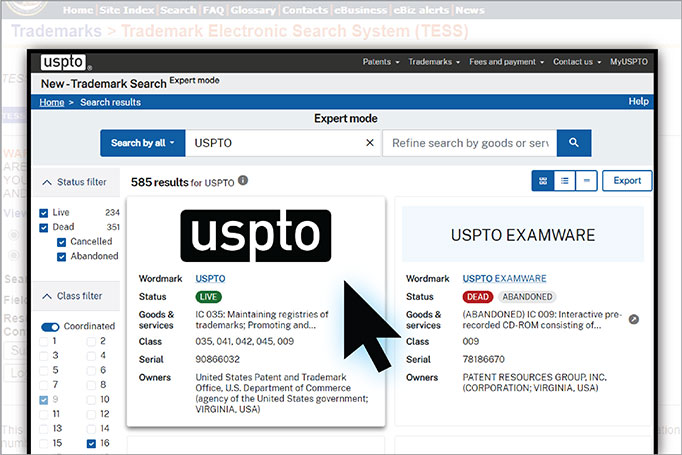
The Trademark Electronic Search System (TESS) has been a fixture of the USPTO’s information technology portfolio for decades. Those of us in the trademark community have grown accustomed to it, and perhaps even grown fond of it over the years. Maybe you have field tags and design search codes memorized, and you can formulate complex search strings to pull up the exact mark you’re looking for in a snap.
Although TESS has served us well, its long tenure is ending in November. The Bibliographic Retrieval System that has underpinned our internal and external search systems since 1993 is now outdated. On the bright side, we now have an opportunity to provide a more stable, modern search experience that can grow and adapt to the ever-evolving needs of the trademark community.
Our new search system recently launched in beta and we need your help to further its development. Our priority now, especially in the beta phase, is listening to your perspective on what works and what doesn’t, in order to optimize your search experience. To this end, I encourage you to use, learn, and express your feedback and suggestions on the new search. Your feedback will guide how we prioritize and develop updates beginning in 2024 and continuing for the life of the search system.
We understand that acclimating to a new interface and search
syntax takes time and look forward to holding several virtual events to help you
get familiar with the new system:
·
Demo
of the new trademark search system, September 26, 11 a.m. to noon ET
· Demo of the new trademark search system, September 28, 3-4 p.m. ET
·
Federal
trademark searching: Basics, October 2, 2-3:30 p.m. ET
· Federal trademark searching: advanced techniques, October 16, 2-3:30 p.m. ET
Thank you for the valuable feedback you’ve provided thus far, and please keep it coming. As we strive to transform your search experience for the better and to strengthen our IT infrastructure, we’re grateful for your support and engagement.
Posted at 11:18AM Sep 25, 2023 in trademarks | Comments[8]
How the domicile address requirement advances our trademark anti-fraud efforts
Guest blog by Dave Gooder, Commissioner for Trademarks
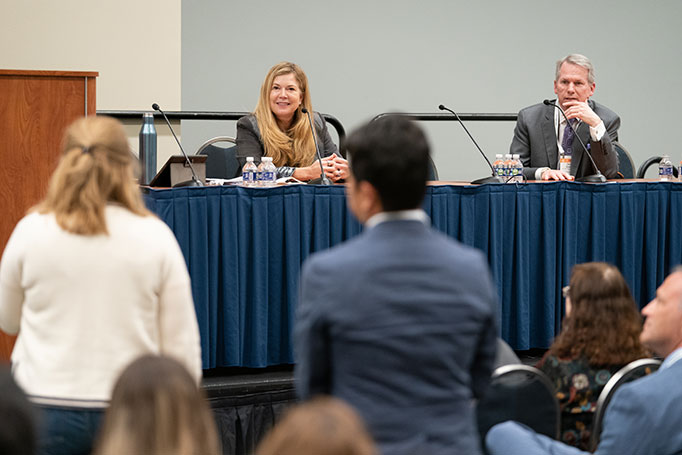
Director Kathi Vidal and Commissioner for Trademarks Dave
Gooder speak to stakeholders at the International Trademark Association meeting
We recently issued an examination
guide to clarify the steps examining attorneys must take to evaluate the
validity of a trademark applicant’s “domicile” as included in their
application. This requirement is also a key part of our comprehensive effort to
fight trademark filing fraud. In this blog, we offer a little more about what
it is, why it’s so important, and what you can do to help.
First, a little background: The Lanham Act requires us to
collect an applicant’s domicile information, and we do so via their domicile
address. An applicant’s domicile address depends on whether they are a natural
person or an entity (such as a corporation). For an individual, domicile means
the place where the person resides and intends as their principal home. For a
juristic person, e.g., a corporation or partnership, domicile means the
principal place of business where the senior executives or officers ordinarily
direct and control the activities of the business. Prior to 2019, USPTO presumed
that the applicant’s listed address was the applicant’s domicile and we did not
refuse customers who provided PO boxes.
In 2019, to better combat the rapidly rising number of trademark scams that were impacting both our customers and us, and to improve accountability for the accuracy of information provided in applications, we issued notice and comment rulemaking and subsequently began requiring trademark applicants and
registrants based overseas to be represented by a U.S.-licensed attorney (also known as the “U.S. Counsel Rule”). At that time, due to our need to enforce
the U.S. Counsel Rule and the heightened risk of its abuse, we began requiring
a street address for the domicile address.
In a world where bots and anyone or anything can file a
trademark application, the U.S. Counsel Rule helps us determine whether or not
the applicant is indeed a real person who either lives or has authorized
representation in the United States. It also helps us know if an applicant
needs to appoint a new attorney if they decide to change counsel.
Unfortunately, the U.S. Counsel Rule has not stopped some
determined scammers who seek to evade the requirement for domicile. Since 2019,
we’ve issued 258 final orders for sanctions for violations of the U.S. Counsel
Rule that terminated 18,789 invalidly filed applications and sanctioned 3,297
registrations. This includes thousands of incidents where foreign applicants
have used the same false U.S. address to avoid having to hire a U.S.-licensed
attorney, or where they appear to have hijacked U.S. attorney credentials and
added those credentials without the attorney’s awareness or permission to
applications in order to create the appearance that they have hired U.S.
counsel.
Our review of suspicious submissions has even revealed U.S.-licensed
attorneys cooperating with foreign filing mills who are filing applications
that violate USPTO
Rules of Practice, including the rules on signatures and certifications,
and the Rules of Professional Conduct. A domicile address is crucial to
combatting these scams.
Importantly, if an individual feels like their personal
safety is at risk if the domicile address appeared in publicly viewable fields,
we provide them the option to redact the domicile address by filing a Petition to the
Director. Additionally, we are committing new resources and teams to
strengthen and uphold the integrity of our IT systems.
The significant and dangerous problems posed by trademark scams
and application fraud should serve as a clarion call to our entire trademark community.
That’s why we ask for all those in the community to consider ways they can
support these efforts. We welcome all ideas at TMScams@uspto.gov, and we look forward to even
more opportunities to hear from you on this and other important anti-fraud
initiatives.
We are humbled and honored to serve this incredible
community that is driving our nation’s economy through the development of new
brands and the business growth that is fueled by strong trademarks. We are grateful for your support.
Posted at 10:46AM Aug 30, 2023 in trademarks | Comments[9]
New Trademarks for Humanity awards competition: Branding a better future
Blog by Kathi Vidal, Under Secretary of Commerce for Intellectual Property and Director of the USPTO
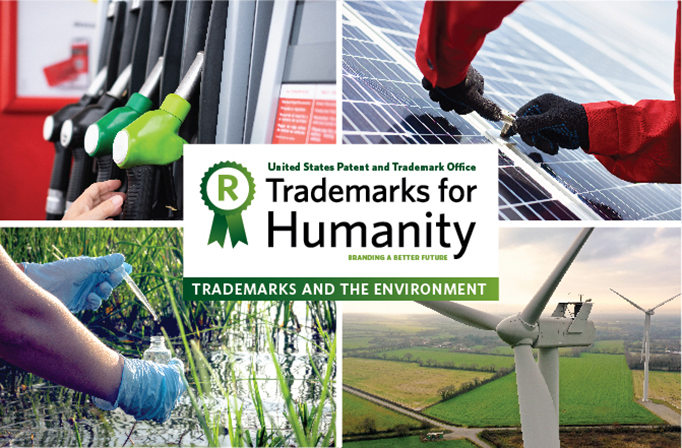
With these important brand owners in mind, today the USPTO is launching the first-ever Trademarks for Humanity awards ceremony. The inaugural competition seeks to recognize those organizations or individuals who are trying to solve environmental challenges and to highlight the importance and value of their trademarks. We have had many years of success encouraging and supporting innovation with our various Patents for Humanity programs, and we are thrilled to create one for the trademark community. Many thanks to the Trademark Public Advisory Committee, including past Chair Susan Natland, for their ideas and collaboration on this new program.
The Trademarks for Humanity awards competition is an important way to encourage more individuals and businesses to join the effort to improve our environment and to recognize and celebrate those who are already working for change.
We are seeking a robust applicant pool, one that reflects the diverse spectrum of brand owners helping solve environmental challenges that impact all of humankind. We welcome and encourage applicants of all types, organizational structures, business focuses, geographic areas, and demographic backgrounds.
Anyone who owns a U.S. trademark registration of any kind—a trademark, service mark, certification mark, collective mark, or collective membership mark—and is using it in connection with products, services, or business practices that help improve the environment is eligible to apply.
All types of products, services, and business practices are eligible, too. Some examples include:
• Recycled or environmentally-friendly materials or practices;
• Work related to renewable energy, green technology, water purification, reforestation, capturing carbon emissions, or pollution reduction solutions;
• Renewable energy solutions licensed to others;
• A certification mark to encourage the use of environmentally-friendly standards or materials;
• Training services to educate and encourage the adoption of best environmental practices
Applicants will be asked to provide basic information about their registered marks and a narrative describing how they meet the following criteria:
• Subject matter: Are the goods, services, or business practices designed to improve the environment?
• Impact: To what extent do these efforts improve the environment?
• Creative solution: Do these efforts reflect a creative solution to an environmental problem?
• Character of the mark: Does the trademark creatively convey, or has it become associated with, the importance of a healthy environment or the need to improve the environment?
When the application period closes, independent judges will evaluate each entry using these criteria. Awardees will receive recognition for their humanitarian efforts at a public ceremony at the USPTO and will be featured on the USPTO’s website.
Every day, the devastating impacts of pollution, greenhouse gas emissions, deforestation, climate change, and many other environmental crises become apparent. The USPTO is committed to supporting the Administration in finding solutions to these challenges and have launched many new initiatives to encourage more innovation in this space. In addition to this new Trademarks for Humanity award, notable programs include our Patents for Humanity Green Energy category, joint work-sharing program with the National Oceanic and Atmospheric Administration, expedited examination procedures through the Climate Change Mitigation Pilot Program, and partnership with the World Intellectual Property Organization’s WIPO Green program.
Intellectual property protection is a critical incentive for creativity and innovation and a key driver of economic growth. It’s the bridge between a new idea and bringing that idea to market. The Trademarks for Humanity awards competition will celebrate those who harness the power of trademarks to bring products, services, and business practices to market that help make the world a safer and cleaner place.
To apply for the Trademarks for Humanity awards competition, or to learn more, visit the Trademarks for Humanity page of the USPTO website.
Posted at 08:20AM Apr 11, 2023 in trademarks | Comments[5]
Safeguarding the trademark community against fraud with identity verification
Blog by Kathi Vidal, Under Secretary of Commerce for Intellectual Property and Director of the USPTO, and David Gooder, Commissioner for Trademarks at the USPTO

Trademark Terminal. Trademark Regal. Trademark Falcon.
Most folks in the trademark community know these names and the havoc they’ve wreaked on legitimate filers, scamming some out of tens of thousands of dollars or hijacking identities to file fraudulent submissions to disadvantage competitors. Their unscrupulous business operations are among the primary reasons why, starting August 6, 2022, the USPTO is taking the important and necessary step of requiring all trademark filers to verify their identities as a condition for filing electronic trademark forms. This initiative, which includes options for both paper and automated identification verification, is key to our comprehensive strategy to protect our trademark customers and the integrity of our trademark register.
Initially a voluntary option, our identity verification program started in January 2022 to better serve our legitimate customers and help prevent bad actors from violating our USPTO Rules of Practice and website terms of use. Since 2016, we have seen significant increases in fraudulent trademark filings, as well as in the number of foreign scammers from China, Pakistan, and elsewhere outside the U.S. These scammers fraudulently file improper submissions that include false signatures, false addresses, false claims of use required to obtain and maintain a registration, and false or hijacked U.S. attorney credentials. In fact, in the past seven months alone, the USPTO has sanctioned bad actors responsible for nearly 20,000 invalidly filed applications.
During the voluntary period, we received thoughtful feedback and suggestions from stakeholders on ways to improve our automated verification process. We listened, and we have updated our original program to include more options and features for trademark filers—both online and by paper. These options include an online program where, after a customer’s identity is verified through the matching of an uploaded selfie and a copy of their government-issued ID (1:1 matching), the selfie is automatically deleted from the system after 24 hours. Further, if a customer does not want to use the automated 1:1 facial matching option, they can verify their identity via a brief video interview with an online representative. The video will be deleted within thirty days of the interview. We are also continuing to offer the paper process for verification. Filers who already have ID verified USPTO.gov accounts for their patent submissions can use their existing accounts for trademark filings as well.
We believe in customer choice and in tools that are equitable and secure. We are gratified that more than 58,000 trademark filers have already chosen to verify their identities through this program. We will continue to listen and learn from all those who believe in preserving an effective and secure trademark register and want to work with us to protect our trademark community. Further, we will soon be issuing a Federal Register Notice that provides additional clarity and context on the user roles required to verify filers’ identities and help maintain a seamless verification process. We welcome stakeholders to visit our ID verification program page to learn more about our program.
It is our privilege to serve our nation’s trademark community, and it is a privilege we do not take lightly. As we continue to develop our Register Protection program to get ahead of the problem, we will also continue to do everything in our power to thwart those looking to scam our customers. That includes issuing sanctions orders and listing known bad actors on our website. We also support our trademark customers and those seeking to protect their brands by providing more information on our processes and resources through programs like our Trademark Basics Boot Camp series and in our new Trademark Registration Toolkit. And, of course, by working every day for American business owners.
Posted at 06:05AM Jun 30, 2022 in trademarks | Comments[2]
The Trademark Modernization Act: Implementing changes to protect brand owners
Guest blog by David Gooder, Commissioner for Trademarks

The ongoing COVID-19 pandemic presented both challenges and opportunities to seek input from the public regarding our implementation of the TMA. While we couldn’t travel the country and meet with stakeholders in their communities (as we did when implementing the America Invents Act), or hold events at USPTO headquarters in Alexandria, Virginia, the widespread use of video conferencing allowed us to get out early and frequently to stakeholder groups as we developed the rules and procedures.
Starting in late January, prior to publication of the notice of proposed rulemaking (NPRM), we hosted meetings and virtual roundtables to field questions and comments and to give stakeholders the opportunity to directly voice their concerns and viewpoints. Doing so virtually allowed us to gain this input far more quickly and efficiently than in-person events. In fact, over 500 people registered for our March 1 roundtable. We heard from in-house counsel for multinational corporations and partners at major IP firms, as well as small business owners and practitioners working for nonprofits and in under-resourced communities. The diversity of perspectives and breadth of feedback from these meetings gave us valuable guidance through the rule drafting process. Watch the recording of the roundtable.
Based on the success of the first roundtable, we held two more in June after publication of the NPRM. Combined, another 600 people registered.
Additionally, throughout 2021, we met virtually with industry and practitioner groups to present the about the TMA and answer questions. We created new channels, including a special TMA email box, TMFeedback@uspto.gov, to field questions and concerns.
All comments we received during this entire process were read and heard, and many of them influenced the final rule. For example, after receiving comments on the NPRM, we increased the time allowed for responding to a non-final office action issued in connection with an expungement or reexamination proceeding from two months to three months and added a one-month extension of time to respond. We also increased the time allowed for responding to a final action in such cases to three months.
We also asked the public for comments on two specific issues that were not required by the TMA, but helped us determine what to include in the final rule:
• Whether to establish a limit on the number of petitions for expungement or reexamination that can be filed against a registration. The public consensus was that we shouldn’t.
• If the USPTO Director should require a petitioner to identify the name of the real party in interest on whose behalf the petition for expungement or reexamination is filed. The public consensus was that petitioners shouldn’t be required to identify the real party, but that the Director should be able to require it if abuse was suspected.
To each of you who took part in this collaborative effort to implement the most sweeping change to our trademark law in a generation - thank you. Your participation shows that every voice has the power to shape government in ways that better serve the public.
Stay tuned as we continue to implement changes to modernize and strengthen our trademark system, to the benefit of businesses, brand owners, and consumers everywhere.
Posted at 03:59AM Dec 17, 2021 in trademarks | Comments[7]
USPTO’s comprehensive strategy to fight trademark fraud
Blog by Drew Hirshfeld, performing the functions and duties of the Under Secretary of Commerce for Intellectual Property and Director of the USPTO, and David Gooder, Commissioner for Trademarks at the USPTO
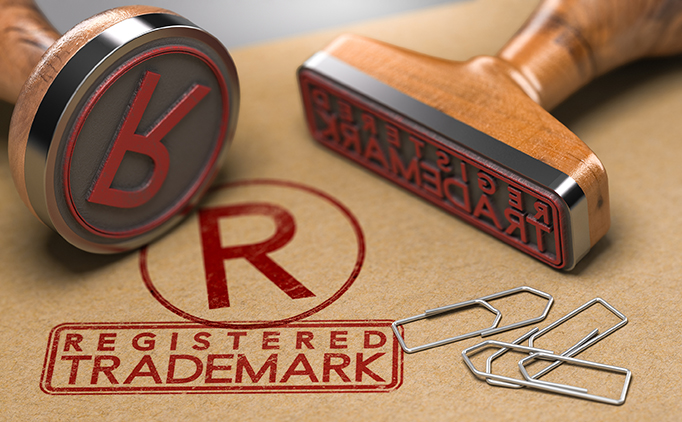
The rise in fraudulent trademark filings and trademark-related scams has driven us to implement new strategies and tactics to intensify our attack against those who would seek to undermine the value and legitimacy of this important intellectual property right. A change of approach, which we embarked on several years ago, was necessary to confront an unprecedented threat, one that is common among industries dealing with the scourge of counterfeits, fakes, illicit trade, and even piracy. We believe the best way to fight trademark application fraud and scams and to aggressively safeguard our trademark register is to pivot to a comprehensive brand protection-type strategy and starting last fall, we did just that.
As of this writing, the USPTO has experienced a 40+% increase in trademark applications over the past year, representing the greatest number of new trademark applications in history. This increase in applications has been driven by a number of factors during the pandemic, including the growth of cross-border e-commerce, foreign government subsidies, and a tremendous rise in new business formation. Thousands of foreign manufacturers that want to sell directly to U.S. consumers have been told that they need a U.S.-registered trademark for their products to receive priority position on e-commerce sales platforms. Even though this is not necessarily true, the phenomenon has spawned new low-cost filing mills, multi-national scams, and even created a secondary market for buying and selling U.S. trademark registrations.
As a result, low-cost trademark filing companies claiming to specialize in the acquisition of U.S. trademarks have aggressively been marketing their services to potential and unsuspecting clients. Most foreign manufacturers and sellers have little or no experience with U.S. trademark laws and registration procedures so they don’t know whether or not these services are legitimate.
Conversely, many foreign agents are aware of the USPTO rules, yet try to find ways to circumvent them. For example, they hijack the credentials of attorneys licensed in the U.S. or they enter into relationships with questionable U.S. attorneys who rubber-stamp whatever paperwork they provide. The U.S. trademark registration system has historically relied upon the good faith intentions of its customers and their counsel. These illicit operators, however, are trying to game the system in order to illegally obtain U.S. registrations.
Traditionally, our examining attorneys have been on the front lines of this fight, but conducting investigations instead of examinations only does a disservice to legitimate applicants seeking trademark registrations. Moreover, the examination process does not always efficiently lend itself to discovering wider patterns of fraud and improper behavior that often taint many applications at a time.
Because multiple applications are often filed by a single entity using the same data elements but owned by multiple applicants, it is by tracking those common data points through our IT systems that we identify and fight back against these schemes. To achieve this result on the scale we need, in 2019 we created – and are now expanding – a special task force of attorneys, analysts, cyber investigators and IT personnel to investigate submissions that we suspect are violating U.S. rules of practice, representation rules, or USPTO’s terms-of-use.
The USPTO does not have law enforcement capability, so we leverage what we do have: the ability to enforce our rules against those seeking to circumvent them. Further, when an investigation uncovers attorney misconduct, we refer them to our Office of Enrollment and Discipline. And when an investigation involves suspected criminal activity, we engage with law enforcement authorities.
For those suspected of violating the USPTO’s rules, we issue show-cause orders requiring them to establish that their filings and behavior are legitimate. If they respond inadequately, or if we find that applications were filed with the intent to circumvent our rules, then we issue a final order for sanctions, including terminating the tainted applications and blocking the filer’s access to our trademark system. Additionally, we are increasing our database security through login, identity authentication, and role-based access controls. Doing so will help prevent bad actors from submitting any future applications.
The USPTO has other new tools we are now employing against inaccurate or fraudulent submissions. For example, in our Post-Registration Proof of Use Audit Program, we implemented a fee penalty in January for those filing inaccurate claims-of-use in their filings to maintain their registrations. And this is starting to have a positive impact on accuracy. Also, the soon-to-be implemented Trademark Modernization Act of 2020 will allow third parties to challenge registrations they believe are not or have never been validly used. These new cancellation proceedings will help clear our register of inaccurate and unused registrations which clutter the register and diminish its value to our country and the trademark ecosystem.
The surge of trademark filings has created challenges, but those challenges also highlight the significant value of U.S. trademark registrations. Brands that are registered at the USPTO command more respect than ever before, and their growing status is a direct result of the U.S. trademark system that is constantly evolving. And as we forge ahead, we welcome every opportunity to work with our stakeholders both foreign and domestic to protect our register and issue trademarks that have true and lasting value.
Posted at 05:44AM Aug 18, 2021 in trademarks | Comments[4]
Celebrating the 75th anniversary of the national trademark system
Blog by Drew Hirshfeld, performing the functions and duties of the Under Secretary of Commerce for Intellectual Property and Director of the USPTO
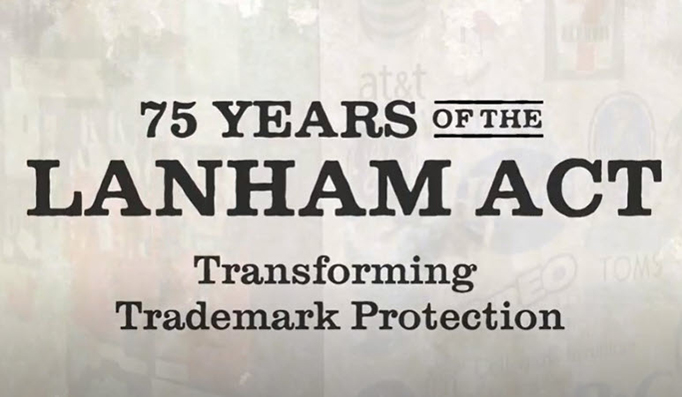 Photo courtesy of the National Inventors Hall of Fame Lanham Documentary.
Photo courtesy of the National Inventors Hall of Fame Lanham Documentary.It was 75 years ago that President Harry S. Truman signed Rep. Fritz Lanham’s Trademark Act into law. This landmark legislation made possible today’s system of trademark registration and protection, but it took almost a decade of debate in Congress with countless hearings on the need to replace earlier, outdated statutes and the patchwork of trademark systems in each of the states. Today, the U.S. economy is the beneficiary of those efforts and this masterful law that has stood the test of time, transforming the U.S. economy through the growth of national and global brands.
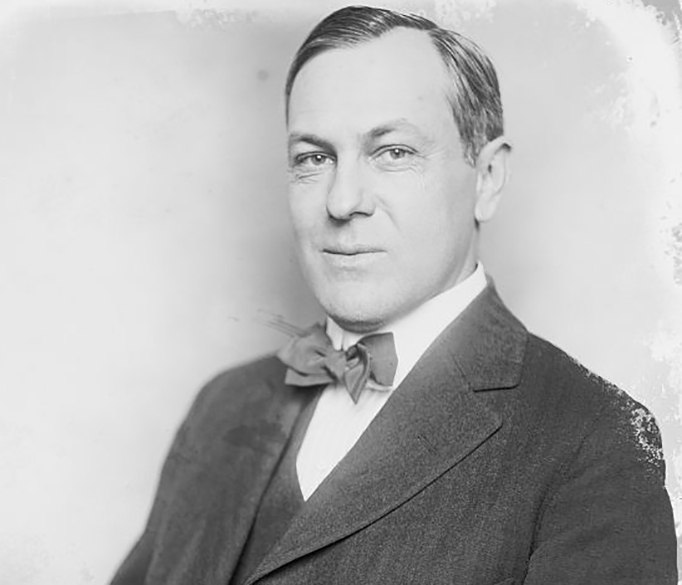
Today, when you read the Lanham Act, its simplicity, prescience, and thoroughness are striking. There are not many 75-year-old acts of Congress that have withstood the kinds of changes our nation and economy have experienced since 1946.
The U.S. Patent and Trademark Office has issued almost 6.3 million trademark registrations since the Lanham Act became law. There are currently 2.8 million live trademark registrations and there are 55,000 trademark attorneys representing the owners of these active marks.
Trademarks and brands are an essential part of the global economy. And through all the economic growth and dramatic changes in industry, society, and technology, the Trademark Act of 1946 has remained virtually unchanged--and now, in its 75th year, we are on track to implement the Trademark Modernization Act of 2020 by December of this year. The goal is to improve the integrity of the trademark register, provide trademark owners with better means to protect their trademarks, and implement systems and procedures aimed at reducing registrations that are not in use, fraud and abuse.
The Trademark Modernization Act could not have come at a better moment. The pandemic has vastly accelerated the shift to an all-digital economy, along with incredible growth in e-commerce. We currently expect to receive over 750,000 trademark applications this year, an increase of about 35% over 2020 and more than triple the number of trademark applications we received in 2001. Read more about the recent surge in trademark filings.
Trademark applications from U.S. filers have increased by 21% so far this fiscal year. The vast majority of our applications are either from first-time filers or small businesses.
As our trademark system evolves, we continue to benefit from the vision of U.S. history’s greatest champion of trademark protections, Fritz Lanham. We are proud to celebrate 75 years of our federal trademark structure and all it has provided to past, current, and future American entrepreneurs.
To learn more, watch the brief documentary “75 years of the Lanham Act” produced by the National Inventors Hall of Fame, in cooperation with the USPTO and the State Bar of Texas, or watch the recording of the USPTO's 75th anniversary celebration event.
Posted at 06:08AM Jul 27, 2021 in trademarks |
What a huge surge in trademark filings means for applicants
Guest blog by David Gooder, Commissioner for Trademarks
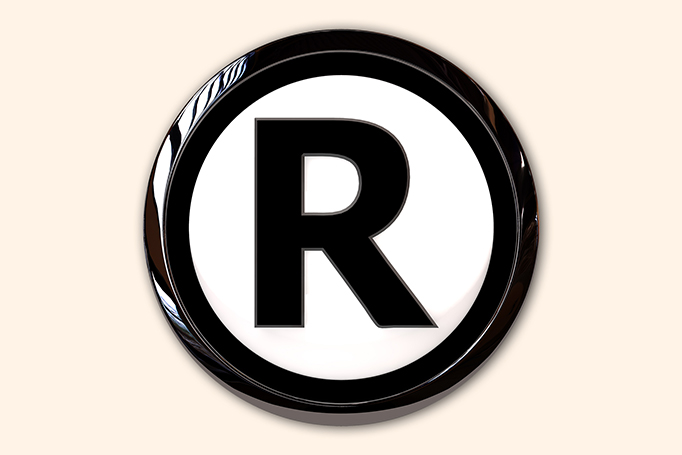
We are continuing to explore the reasons behind the surge, but we do know that the increase comes from both foreign and domestic filings and is caused in part by an increase in e-commerce during the pandemic. For our customers, the bottom line is that applications are coming in faster than we have historically been able to examine them, and the backlog is increasing. We are keenly aware of this challenge and have taken steps to increase productivity, while maintaining the high quality our applicants expect.
For example, we’re implementing information technology solutions and system enhancements to process applications even faster. In addition, we've hired more examining attorneys and staff, we're finding better ways to distribute the workload among our current attorneys and staff, and we’re looking at every step in the examination process to find ways to increase efficiency. Through these and other actions, we will eventually bring our processing times back to customary levels.
If you have questions about this issue, or suggestions for us to consider, we welcome your feedback at TMFeedback@uspto.gov.
Posted at 09:17AM Jun 23, 2021 in trademarks | Comments[4]
The Trademark Modernization Act: What brand owners need to know
Guest blog by David Gooder, Commissioner for Trademarks at the USPTO

To help drive U.S. innovation, in 1946, Congress passed the United States Trademark Act, widely known as the Lanham Act. This federal statute sets out procedures for the registration of trademarks. Trademark owners may apply for a U.S. registration if they are either using the mark at the time of filing or have intent to use the mark in commerce. However, actual use of the trademark in commerce is required to obtain and maintain a U.S. registration.
In recent years, the USPTO has received an increasing number of trademark filings with dubious and sometimes bogus claims of use. This raises concerns about invalid registrations that clutter the register and interfere with the adoption of new marks. It is in this arena that the TMA will provide brand owners and the USPTO with the following powerful new tools:
- The TMA codifies the Letter of Protest procedure, which allows third parties to submit evidence during the examination of trademark applications, including evidence that claims of use in an application are inaccurate.
- The TMA gives the USPTO the authority to shorten response deadlines in order to move applications more quickly through the system, thereby allowing us to swiftly dispose of applications where fraud or other deceptive or deceitful behavior is evident.
- The TMA provides new registration cancellation mechanisms so that third parties or the USPTO Director may challenge registrations that are not in use without having to engage in more expensive proceedings before the Trademark Trial and Appeal Board.
Efforts to implement these and other provisions of the TMA are well underway, with the deadline for implementation set for December 27, 2021. Public feedback has been and will continue to be essential to USPTO’s rulemaking process. Brand owners and stakeholders can learn more by visiting the Trademark Modernization Act page of the USPTO website, emailing TMFeedback@uspto.gov with any feedback, or by viewing the recording of our public roundtable on the implementation of the TMA held on March 1, 2021. Further, there will be the opportunity to submit formal comments on the Federal Register website next month when a Notice of Proposed Rulemaking is published.
Our trademark ecosystem will benefit greatly from these important new provisions which will remove clutter and provide greater access to new marks, thus benefiting businesses and entrepreneurs throughout the United States.
Posted at 06:26AM Apr 22, 2021 in trademarks |
USPTO fights trademark scams
Guest blog by David Gooder, Commissioner for Trademarks, U.S. Patent and Trademark Office
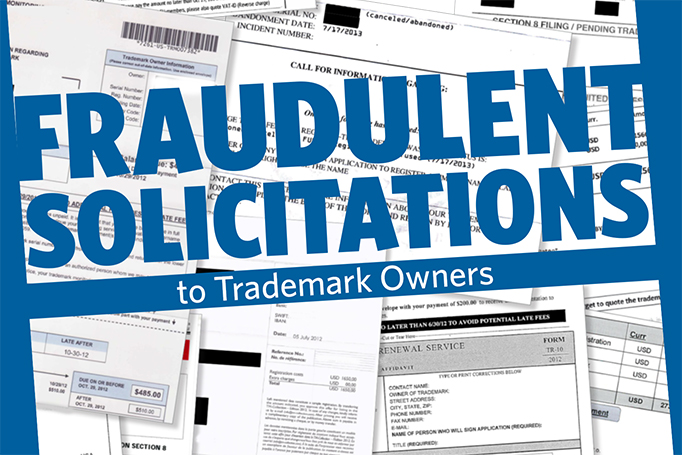
One disturbing trend lately is the rise of fraudulent solicitations from so-called IP “experts” offering their services to assist owners of trademark applications and registrations at the USPTO. These solicitations often mislead owners into believing they are from the USPTO. Yet, the spurious offerings are either never performed or are botched, potentially putting a trademark application or registration at risk of failure. Often, these charlatans are charging inflated fees for bogus services. The scams target owners of U.S. trademarks from around the world.
Although the USPTO does not have the legal authority to sue or prosecute those who attempt to defraud our customers, or to stop private companies from sending trademark-related offers and notices, we are shining a spotlight on the issue to raise awareness in the community and do our part to fight back. As such, we are actively engaged where possible, with the Department of Justice (DOJ), the Federal Trade Commission (FTC), and the United States Postal Inspection Service (USPIS).
In fact, in July 2017, we held a public roundtable to discuss how to combat these scams. As a result of this meeting, in 2018, the DOJ invited the USPTO to provide two IP attorneys to support the DOJ and the USPIS in a two-year “detailee” program as those agencies investigated and prosecuted offenders.
Our detailees assisted in several investigations, including one led by Homeland Security Investigations, in conjunction with USPIS that resulted in the recent arrest of an individual who allegedly defrauded trademark owners out of more than $1 million. The individual was offering bogus services that were falsely associated with the USPTO. The defendant allegedly sent solicitation letters under business names like “Patent and Trademark Office” from a Washington, D.C. address and from a non-existent “Patent and Trademark Bureau LLC” at a New York address. The case is currently pending in federal district court.
To further assist trademark owners, the USPTO posts a listing of third-party solicitations on the USPTO website from entities known for sending scams and offering misleading services and notices. The webpage provides trademark owners and those applying for trademarks with examples of recent fraudulent solicitations that have been the subject of complaints.
The USPTO warns customers about misleading solicitations at various points in the trademark registration and maintenance processes. For example, applicants are warned at the time when they receive confirmation of the filing of an application and when they receive a new registration certificate. In addition, representatives from the USPTO speak frequently on the topic at outreach events with counsel and business owners.
If you receive information from, or have been misled or paid money to one of these scammers, please file a consumer complaint with the FTC immediately. Do not discard the offer, the envelope, or the electronic message as it may be used to trace the source.
Additionally, if you receive a phony solicitation from a company that is not on our list of abusers, please email us at TMScams@uspto.gov. Include copies of the solicitation and, if applicable, the envelope it came in so we can assess whether to add the sender to the list. You do not need to notify us about firms that are already listed.
The USPTO is here to promote and protect the intellectual property of those who have worked so hard to create it. We want every person and company that has received a trademark registration to have the chance to be successful in the marketplace, hire workers, and create a more prosperous future for our country.
Posted at 08:20AM Nov 24, 2020 in trademarks | Comments[4]
A conversation with Kareem Abdul-Jabbar at the 2018 Trademark Expo
Guest blog by Linda Hosler, Deputy Program Manager for USPTO partnerships
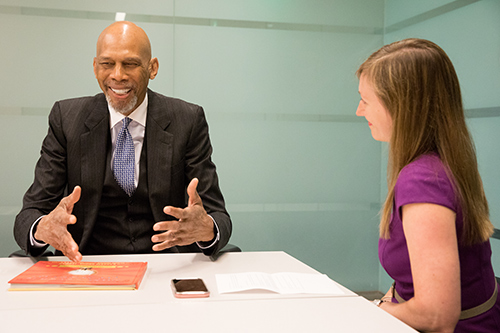
Kareem Abdul-Jabbar, NBA legend, businessman, and a registered trademark owner, shared his thoughts on African American inventors and the importance of intellectual property with the USPTO’s Linda Hosler on July 27. In his brief interview with the USPTO, Abdul-Jabbar said, “… science, technology, engineering and math really are the foundation for all of the good jobs where young people should focus,” which is part of the mission at his foundation, Skyhook. Photo by Jay Premack/USPTO.
On July 27 and 28, guests poured in to the Smithsonian’s National Museum of American History to participate in the 2018 National Trademark Exposition. This free biennial event supports the USPTO’s mission of educating the public about the vital role intellectual property protections—in this case trademarks— play in our increasingly competitive global marketplace. More than twenty exhibitors, including government entities, non-profits, small businesses, and corporations from all over the country provided thought-provoking interactive displays and educational workshops.
Keynoting at this year’s expo was NBA All-Star, author, and entrepreneur, Kareem Abdul-Jabbar. I had the opportunity to sit down with Abdul-Jabbar to find out what made him the industry giant he is today—not surprisingly, it is much more than his 7 foot 2 inch stature.
Note: The transcript below is edited for length and clarity.
[Linda Hosler] Could you start by telling me a little bit about how you think we can spark innovation?
[Kareem Abdul-Jabbar] I think the saying really holds true that necessity is the mother of invention. So people get it in their mind that they have a problem that needs to be solved, and they put a lot of thought into how to get something done easier, quicker, safer, and asking: “how do you improve a situation?”
[LH] With that in mind—that necessity is the mother of invention—could you talk about a time in your life where you had to overcome a barrier?
[KAJ] Oh yeah. Retiring really presented me with a whole set of situations. You can’t just sit around all day and think about how many points you scored against the Denver Nuggets. You’ve got to do something with your life.
Writing and history were two of my passions. So, I put pen to paper, and I wrote the history book that I felt needed to be written. It's called “Black Profiles in Courage.” And I just went from there. It was one step after the other. And that's how my writing career evolved.
[LH] That's fantastic. Regarding one of your other books, “What Color is My World?: The Lost History of African-American Inventors”, why did you pick to talk about African-American inventors? Have you always been interested in science and technology?
[KAJ] I just started to write about the things that I felt needed some attention. So for me, the contributions that Black Americans have made to America that go unacknowledged and under-reported was my focus. So I ended up with this book.
It is really important for me to connect with kids who don't understand what their legacy is, and preparing them to be productive citizens. People are always shocked when they found out that a black person invented the ice cream scoop, or potato chips, or the filament that made electric lighting possible.
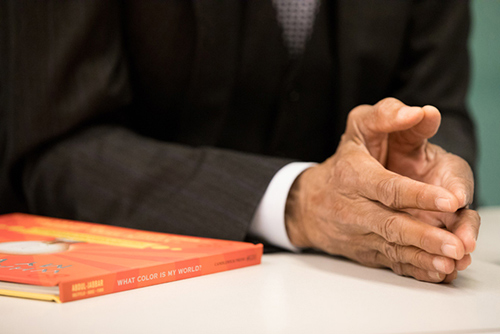
Kareem Abdul-Jabbar's book, "What Color is my World?: The Lost History of African-American Inventors” highlights the contributions Black Americans have made to America in a relatable format for young people. Photo by Jay Premack/USPTO.
[LH] I'm going to shift gears a little bit and ask about the role of intellectual property (IP) in your career. You have many trademarks, including one for your name. Could you talk a little bit about the role of IP in your career?
[KAJ] Well, I think as an athlete nobody can challenge your unique identity. But when you step away from the game, it's really important that people understand who you are when you enter the marketplace. My name, image, and likeness are things that have enabled me to make a living. So, you know, you have to protect that.
[LH] What advice do you have for other entrepreneurs and innovators?
[KAJ] Geez, it's hard for me to advise anybody. I don't know their circumstances. But I think having a plan for what you want to do is always the first step. Things don't just fall out of the sky. You have to really understand who you are and where you want to go. So that whole process of self-examination, I think, is a good starting point for people who want to be entrepreneurs.
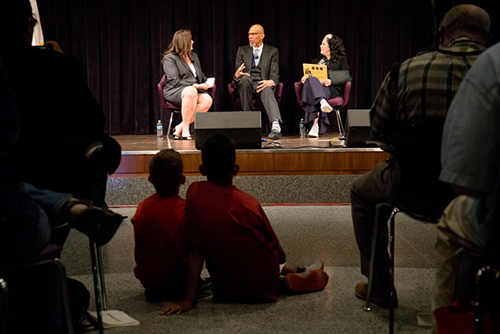
Moderated by the Vice President of Global Divisional Communications for Hologic Jane Mazur, NBA all-star Kareem Abdul-Jabbar and his business manager Deborah Morales discussed how celebrities build and maintain their brands at the 2018 National Trademark Exposition. Photo by Jay Premack/USPTO.
[LH] What about a young person who reads your book and is inspired by it? What advice would you give them?
[KAJ] Follow your dream. Understand what your passion is and try to follow that. A lot of young people think, “Oh, I can't do that.” That's usually where they come from, because they know very little about the world and their own potential. So you have to impress upon young people that they have tremendous potential, but it takes work to realize some benefits from it.
[LH] I think we’re almost out of time. So, before we close, could you tell us a bit about your non-profit, the Skyhook Foundation?
[KAJ] The mission is to get young people to understand where the good jobs will be in the 21st century. So science, technology, engineering and math really are the foundation. And the most important aspect of it is getting them to understand that they can do it. Too many kids see technology as something for other people from other parts of the world, and they don't realize that they can do it here in our country. We focus on the fourth and fifth graders and we try to help them to focus on success from an early age.
A special thank you to Kareem Abdul-Jabbar for sharing his insights. You can learn more about trademark protection on the Trademarks page of the USPTO website.
Posted at 05:05AM Aug 06, 2018 in trademarks |
Trademark Trial and Appeal Board Celebrates 60 Years
Guest blog by Chief Administrative Trademark Judge Gerard Rogers and Administrative Trademark Judge Susan Hightower
Employees of the Trademark Trial and Appeal Board (TTAB) like to say: “We have our trials, but our work is appealing.” So what does that mean, exactly? The Board’s 60th birthday in 2018 offers the perfect opportunity to take a closer look.
The TTAB is an administrative tribunal within the U.S. Patent and Trademark Office (USPTO) and seeks to spur job creation by the timely adjudication of trademark disputes. The Board’s trial proceedings are similar in many ways to a federal district court, except that we don’t hear testimony from live witnesses. Instead, our proceedings are conducted outside the Board and in writing; and we make decisions based on written administrative records, although parties can opt for an oral hearing in their cases, after the presentation of evidence is complete.
Today, most cases commenced at the TTAB – around 70% – are trial cases, but most cases decided on the merits – around 75% – are ex parte appeals by applicants whose applications to register trademarks have been refused by a Trademark Examining Attorney. The trial part of the Board’s work involves deciding trademark registration disputes between two or more parties, known as inter partes proceedings. Most of these inter partes proceedings before the TTAB are oppositions, where a plaintiff attempts to prevent registration of a pending trademark. Cancellations are cases in which the plaintiff is trying to cancel an existing registration. Approximately 50 paralegals, attorneys and administrative trademark judges work on these cases. Our decisions in both ex parte appeals and inter partes proceedings can be reviewed by either a U.S. district court or the U.S. Court of Appeals for the Federal Circuit.
Things were very different 60 years ago. When the Trademark Act (15 U.S.C. §§ 1051-1141) – also commonly known as the Lanham Act – was enacted in 1946, ex parte appeals were heard directly by the Commissioner of Patents, while inter partes cases were decided by an Examiner of Trademark Interferences, with the right to appeal to the Commissioner of Patents. (Both types of cases could be delegated to an Assistant Commissioner of Patents.) Due to the volume of these cases, in a 1955 article in the Journal of the Patent Society, Assistant Patent Commissioner Daphne Leeds, who was the first woman Assistant Commissioner and an active member of the American Bar Association committee that assisted in drafting the Trademark Act, suggested creating an administrative board to handle the workload.
Leeds’ idea came to fruition on August 8, 1958, when President Eisenhower signed an amendment to Trademark Act Section 17, 15 U.S.C. § 1067. The amendment created the Trademark Trial and Appeal Board “to determine and decide the respective rights of registration” and provided for the appointment of Board members to hear and issue, by a three-member panel, final decisions in inter partes cases and ex parte appeals. Four members were appointed, and the Board consisted of those original four members through 1974. The Board still decides the merits of its cases by panels of three judges, now called administrative trademark judges – ATJs for short – appointed by the Secretary of Commerce. Board paralegals and attorneys handle motions and “interlocutory” filings to keep cases moving through the appeal and trial processes, so that they are ready for submission “on brief” or after oral argument.
The Board’s leader was known as the “Chairman of the Board” until 1993 and today has the title “Chief Administrative Trademark Judge.” Past and present Chairmen of the Board/Chief Administrative Trademark Judges include Saul Lefkowitz (1975-81), Dan Skoler (1982-84), David Sams (1984-2009), and Gerard F. Rogers (Acting Chief Judge 2009-10; Chief Judge 2010-present). The first Deputy Chief Judge, Susan Richey (2014-2017), was appointed in 2014.
Throughout the years, the TTAB has presided over a variety of cases presenting issues of “first impression” or which garnered significant public attention. While most cases involve word marks or designs such as logos, the Board has also had to rule on the registrability of scent marks, sound marks, color marks and the shape or “configuration of” products or product packaging.
TTAB decisions rarely are discussed in cases reaching the U.S. Supreme Court, but in 2015, in the case of B&B Hardware, Inc. v. Hargis Industries, Inc., 135 S. Ct. 1293, that court held that Board decisions “can be weighty enough to ground issue preclusion” when the parties that were involved in a Board case later are involved in a case in a U.S. district court. In other words, the Board decision may, in appropriate circumstances, bind the district court and bar the parties from relitigating the issue in that subsequent court proceeding.
Most recently, the U.S. Supreme Court issued a ruling in Matal v. Tam, 137 S. Ct. 1744 (2017), in which musician Simon Shiao Tam applied to register the mark “The Slants” for his dance-rock band. Tam’s application was denied as disparaging to people of Asian descent under a provision of the Trademark Act that prohibits registration of any mark that “may disparage persons, institutions, beliefs, or national symbols,” a decision which the TTAB affirmed. The U.S. Court of Appeals for the Federal Circuit, in an en banc decision, vacated the TTAB’s decision on constitutional grounds and the case wound up before the Supreme Court. The Supreme Court ultimately agreed with Tam that the disparagement clause of the Trademark Act violated the Free Speech Clause of the First Amendment.
Twice within the last decade, the Board also decided challenges brought by Native Americans seeking to cancel as disparaging the “Redskins” trademark owned by the Washington Redskins professional football team. Though both decisions were appealed to district courts, neither reached the Supreme Court. The more recent of these two cases was rendered moot by the Supreme Court’s decision in Matal v. Tam.
Examples of some other recent high-profile cases include refusals to register marks for marijuana products (illegal under federal law); disputes over who owns registrations after musical groups break up; and attempts to register someone’s name as a trademark without their permission (“Obama Bahama Pajamas,” for one).
In the years to come, the Board will continue to hear and decide trials and appeals of cutting-edge trademark issues reflecting the rapid changes in U.S. commerce and society, and the products and services that we all use. We look forward to the challenge.
For more information, please visit the TTAB page of the USPTO website.
Posted at 05:06AM Jan 05, 2018 in trademarks |
Update: Improving the Accuracy of the Trademark Register
Guest Blog by Chief Administrative Trademark Judge Gerard F. Rogers
The public counts on the accuracy and integrity of the U.S. Trademark Register when selecting and clearing new marks, so as to avoid conflicts with already registered marks. Registered trademarks that are not actually in use in commerce unnecessarily block someone else from the Register. Based on analysis of the results of the Post Registration Proof of Use Pilot, Trademarks found that more than half of registrations being maintained include at least some goods or services for which the registered mark is not actually being used. In the wake of these findings, the USPTO has been exploring ways to improve the state of the Trademark Register. Some changes have already been made, as Commissioner for Trademarks Mary Boney Denison described in her blog post last year. The Trademark Trial and Appeal Board (TTAB) is considering revision of its rules to allow a party to seek cancellation of registrations for marks no longer in use or that never were in use, through streamlined proceedings.
These new streamlined cancellation proceedings would facilitate challenges to registrations for unused marks by those who believe that the mark’s continuing presence on the Register will damage them in some way, often because it is blocking the challenger’s attempt to register the same or a similar mark. A party seeking to “clear” a mark for use and registration who encounters a registered mark that presents a potential likelihood of confusion may investigate and find that the registered mark seems not to be in use in commerce. Instead of commencing a full cancellation proceeding, the party could initiate a streamlined proceeding and, by providing evidence of nonuse, quickly and efficiently clear the blocking mark from the Trademark Register. Unlike a full proceeding in which a challenger must bring all available claims or run the risk of being barred from raising them in the future, the challenger may focus solely on claims of nonuse or abandonment, without endangering its option to bring other claims in the future.
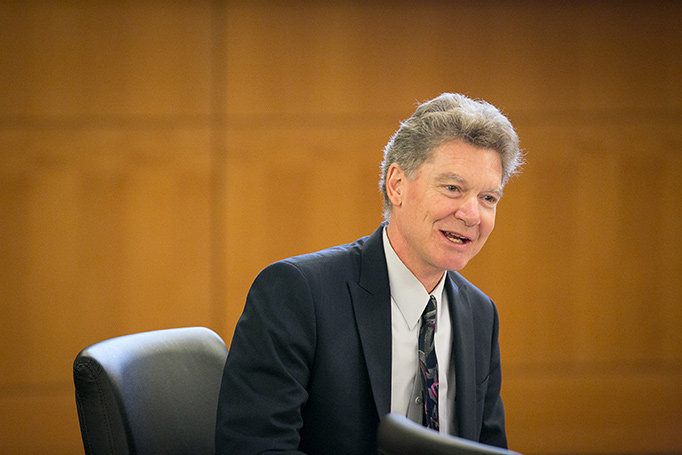
Chief Administrative Trademark Judge Gerard F. Rogers
Specifically, the grounds a party could assert would be limited to: (1) abandonment of one or more goods/services (nonuse plus intention not to resume use); or (2) no use for one or more of the goods/services prior to the relevant date of an allegation of use Counterclaims by the registrant would not be permitted. Procedures that would facilitate speed and efficiency of these proceedings could include: requiring the challenger to submit evidence sufficient to support its grounds at the time of filing the petition, and the registrant to submit proof of use of the mark with its answer; limiting discovery to the challenger’s standing if it would prove dispositive; and an abbreviated schedule with no oral hearing. The TTAB would commit to determination of the cases within an expedited timeframe, potentially 70 days from commencement (in cases of default by the registrant) to approximately 170 days from commencement for cases decided on the merits. The cases also could be less expensive, with lower fees and legal costs, due to the relative simplicity of the proceedings.
To obtain preliminary feedback on whether streamlined proceedings would be useful and how they should be structured, on May 16, 2017, the USPTO published a request for comments in the Federal Register (82 Fed. Reg. 22517). A variety of stakeholders and customers responded with comments. The USPTO received valuable feedback on the potential effectiveness of the proceedings overall, as well as on specific issues such as safeguards against potential abuse, timing and deadlines, the appropriate fee amount, procedural points, standing, the burdens of production and proof, the use requirement, and the preclusive effect of Streamlined Proceedings.
After the comment period closed, stakeholders gathered for a public meeting on September 25, 2017, where the USPTO reported on the comments and attendees engaged in a lively discussion about various aspects of the Streamlined Proceedings. The conversation addressed some discussion questions posted on the USPTO website.
As indicated at the public meeting, the USPTO continues to welcome additional input on the discussion questions and other issues related to streamlined proceedings. Written comments may be submitted via TTABFRNotices@uspto.gov. The success of this type of initiative depends heavily on members of the public, sharing their insights and experience. These contributions allow the USPTO to better understand the participants’ perspectives in weighing the costs and benefits of Streamlined Proceedings. Should the USPTO move forward with Streamlined Proceedings, the next step would be issuance of a notice of proposed rulemaking to set out the specific rule changes needed to implement streamlined proceedings. The USPTO looks forward to continued engagement on this important initiative.
Posted at 04:46AM Nov 17, 2017 in trademarks |
Federal Agencies Tackling Trademark Scams
Guest Blog by Commissioner for Trademarks Mary Boney Denison
Some trademark applicants and registrants have paid fees to private companies while mistakenly thinking they were paying fees required by the USPTO. To combat this problem, last week, the USPTO co-hosted its first ever public roundtable on fraudulent solicitations with the Trademark Public Advisory Committee. The objectives of the event were to educate the public about the problem of misleading or fraudulent advertisements for trademark services, to learn more about what other government agencies were doing, and to brainstorm new ideas for tackling this complex issue.
Joe Matal, who is performing the duties of the Under Secretary of Commerce for Intellectual Property and Director of the USPTO, spoke at this roundtable, as well as 11 public speakers and 7 federal speakers from the USPTO, U.S. Department of Justice (DOJ), U.S. Postal Inspection Service (USPIS), Federal Trade Commission (FTC), Small Business Administration (SBA) and U.S. Customs and Border Protection (CBP). Matal urged all of the participants to “work together to corral and fix this problem.”

Mary Denison and Joe Matal at the Public Roundtable on Fraudulent Trademark Solicitations
The USPTO has worked closely in the past with other federal agencies on criminal prosecutions for fraudulent trademark solicitations. During the roundtable, representatives from DOJ and USPIS spoke about the recent criminal convictions in California of five individuals, including employees of a bank, who ran a lucrative trademark scam and knowingly laundered the proceeds. Two have been sentenced and the remaining three are scheduled for sentencing in August. To learn more about this case and the USPTO’s role in it, read my blog from December 2016.
Trademark scams range from offers to file renewal and maintenance documents, to offers to record marks with U.S. Customs and Border Protection, to monitoring services, to recordation in useless databases. Some of the scammers take consumers’ money and deliver nothing. For instance, during the roundtable, the American Intellectual Property Law Association cited an example of a restaurant that mistakenly paid a scammer to file maintenance documents for a registration. The restaurant relied on the assumption that the filing would be made. Only when the restaurant sought legal counsel about enforcement against an infringer did it learn that the scammer filed nothing and the registration had been cancelled. Others scammers actually perform work but at exorbitant prices. One speaker at the roundtable had filed three civil law suits against different scammers.
At the USPTO, we offer warnings in trademark application filing receipts, in emails transmitting office actions, and with registration certificates. On the informational page of the USPTO website on trademark solicitations, customers can watch a brief video on how to identify misleading notices, and see a list of fraudulent entities we’ve already identified. For further information, customers can consult our Basic Facts Booklet on protecting trademarks, or contact us directly at TMFeedback@uspto.gov. While the USPTO lacks the power to file lawsuits against the scammers, we have issued cease and desist letters against them and pursued others for unauthorized practice of law.
Anyone who receives a fraudulent trademark solicitation should file a complaint online with the Federal Trade Commission or call 1-877-FTC-HELP. This is key in order to help the government tackle the ongoing solicitation problem, and USPIS and DOJ use the FTC complaint reports to decide which companies to pursue criminally. When filing a complaint, customers should include the solicitation and the envelope with the postmark, as well as a copy of the front and back of any cancelled check paid to a scammer when applicable. Scammers should be reported to the FTC as soon as possible because they frequently change mail drop addresses and other traceable information (often monthly), and delay can hinder or preclude criminal investigations. Note that lawyers can also report solicitations for their clients. The FTC has additional information on scammers and government imposters on its website.
The USPTO continues to work hard to fight solicitations from companies fraudulently promising to protect trademarks. We plan to issue a report on our findings from the roundtable and will continue to collaborate with other federal agencies to educate the public on this issue and identify those responsible.
Posted at 01:02PM Aug 02, 2017 in trademarks |
Update on Global Trademark Harmonization
Guest blog by Commissioner for Trademarks Mary Denison
In late May, I attended the TM5 mid-term meeting in Barcelona hosted by the European Union Intellectual Property Office (EUIPO). The TM5 is a strategic cooperation group of the five largest trademark offices in the world including the USPTO, EUIPO, China (SAIC), Japan (JPO), and Korea (KIPO). I gave a blog update last year on the TM5 meeting we hosted at the USPTO, and I’m happy to report we have continued making headway this year towards global trademark harmonization.
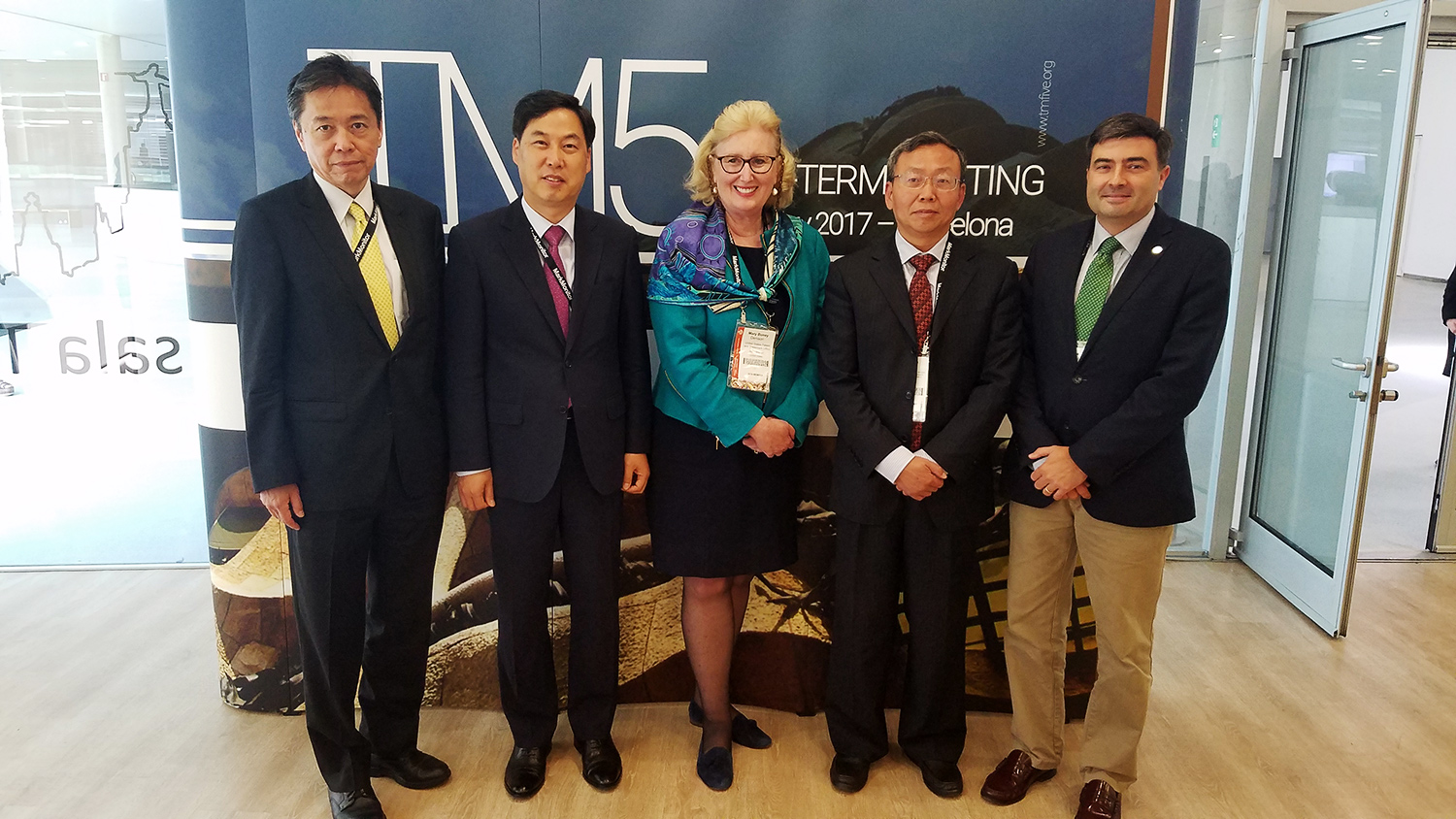
TM5 Leadership
The TM5 seeks to facilitate and harmonize trademark filings within its members, as well as other trademark offices around the world. The work of the TM5 is structured through cooperative projects designed to improve users’ interactions with national trademark offices and the World Intellectual Property Organization (WIPO). These projects include, among others, the Common Status Descriptors project, the Identification project, and the Indexing of Non-Traditional Marks project.
Common Status Descriptors (CSD)
The CSD Project is designed to assist trademark owners and other interested parties in understanding the status of their applications and registrations in other offices, whether or not they understand the language, by using icons and common terms. In the past, partners have used terms to describe the status of applications and registrations that may be confusing to users outside their country or may not have been understandable without knowledge of the local language. While partners will continue to use terminology specific to their offices, they have now agreed to implement a series of Common Status Descriptors which will use icons and a second set of terms common to all of the partners.
![]()
CSDs for Live Application/Published for Opposition and Dead Registration/Expired
These icons and common terms were implemented by the USPTO in 2015 and have now been implemented by EUIPO, JPO, and SAIC. KIPO plans to implement the icons and common terms by the end of calendar year 2017. View all icons and common terms.
Identification Project (ID Project)
For global trademark filers, one bottleneck in applying in multiple jurisdictions has been the differing national practices in accepted application wording to identify the goods and services on which a mark will be used. To attempt to alleviate that bottleneck, the USPTO used the success of the U.S. ID Manual as an inspiration to create a harmonized TM5 ID List. To date the TM5 partners have agreed on more than 17,000 terms they will all accept. Applicants can determine whether a good or service has been agreed upon by the TM5 members by consulting the USPTO’s Manual of Acceptable Goods and Services. For example, if you search for the term “golf shoes,” you will see it is marked with a “T” meaning that it acceptable to all TM5 members.
The USPTO has also solicited participation in the project from a number of countries outside the TM5 members, and we are delighted to report that Colombia, Chile, Mexico, and Singapore have now each accepted more than 10,000 terms. Other current participants include Canada, the Philippines, and the Russian Federation, and we are seeking participation from a number of additional countries throughout the world.
Indexing of Non-Traditional Marks Project (INTM Project)
Non-traditional marks include three-dimensional, sound, single color, tactile, holographic, scent, movement marks, and more—basically all marks that include elements other than character data (words, letters, numerals, etc.) and designs. Trademark professionals have long acknowledged the difficulty in searching for non-traditional marks in the United States and around the world. Most national offices use the WIPO Vienna Classification System, or some variation thereof, to index the design elements in a trademark application. That system does not provide specific codes to index the elements of a non-traditional mark. The TM5’s INTM Project is designed to improve and potentially harmonize the TM5 Partners’ methods of searching for non-traditional trademarks.
We have worked to identify which member countries accept which types of non-traditional marks, and next we will determine how they index them. Once we have that information, the TM5 will move forward to determine best practices, with the potential for agreeing to a common standard amongst the TM5 and perhaps other national offices.
The USPTO is proud to play an important part in facilitating and harmonizing trademark filings throughout the world. The projects that USPTO is leading, along with other projects led by the other TM5 member countries, will contribute to a more streamlined global trademark system going forward.
Posted at 07:06AM Jun 13, 2017 in trademarks | Comments[2]
